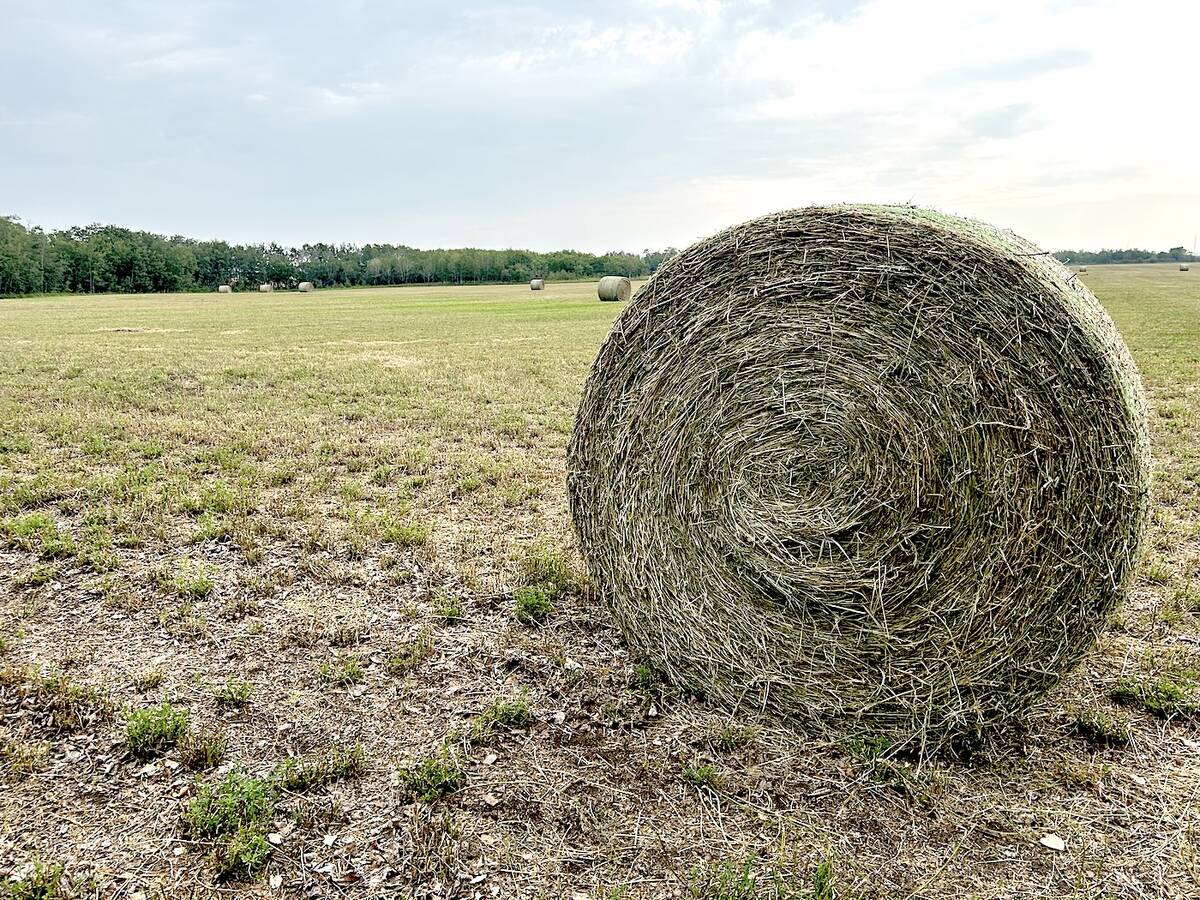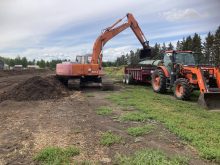Reglone (diquat) and glyphosate are similar, but different and farmers need to know the difference to get the best results from each, says Ed Thiessen of Syngenta Canada.
Both are non-selective herbicides that when applied pre-harvest can speed up combining. But Reglone is a true crop desiccant, while glyphosate is for perennial weed control, Thiessen told the Manitoba Agronomists Conference at the University of Manitoba Dec. 15.
“Farmers view glyphosate as a desiccant,” Thiessen said. “We don’t view it as a desiccant at all. They’ve (Reglone and glyphosate) been around for many years. They work totally differently, but as I say, confusion still reigns.”
Read Also

Alberta has adequate feed supplies going into winter
Hay yields across Alberta were varied, but one expert says feed supplies are in strong supply for Alberta producers for the upcoming winter.
DIFFERENT MODES OF ACTION
Glyphosate is a systemic, moving through plants into their roots. It provides good perennial weed control, but also needs time to work.
Reglone is a contact herbicide that burns off plant leaves very quickly.
Both help crops and weeds dry down, allowing combines to start harvesting sooner, but neither product speeds up seed maturity as many farmers incorrectly believe.
“If you apply either of these two products to a crop too early that is immature you can get inconsistency in desiccation, you can certainly lose yield, you can lose quality,” Thiessen said. “Pulse crops are particularly susceptible if you go too early.”
In fact, for Reglone to work best, the crop should be senescing (hitting the final stages of maturing), he said. If they’re not, sometime plants regrow after being sprayed, especially indeterminate maturing crops.
In contrast, glyphosate works best when the plant is still actively growing.
UNREALISTIC EXPECTATIONS
Both herbicides were widely used this fall “and saved the day” for many farmers, Thiessen said. But some farmers – mostly desiccant novices – were disappointed partly because they had unrealistic expectations.
Proper application is key to getting the best performance, Thiessen said. Farmers need to know the target – the crop or the weeds – and adjust their spray boom height accordingly.
Good coverage is critical, especially for a contact herbicide like Reglone. The more water that’s applied the better. Slower sprayer travelling speeds will also result in better coverage.
Water quality is important too. Hard water reduces glyphosate’s effectiveness and Reglone won’t work as well when mixed with dirty water. Reglone also needs an adjuvant.
Both herbicides work better on some crops than others, Thiessen said. Glyphosate is more effective on grassy plants, while Reglone works best on broadleaf plants.
“Reglone is used on peas, lentils, potatoes – things like that,” he said. “That’s where its strength is.”
Glyphosate is good at “evening up” cereals, while Reglone isn’t registered in cereals and shouldn’t be used, Thiessen said.
NOT FOR MALTING BARLEY
Glyphosate is not registered for use in malting barley either. The herbicide can leave a residue that could turn up in beer. Moreover, glyphosate reduces seed germination, which interferes with the malting process. Reglone doesn’t affect germination.
A lot of farmers wanted to use Reglone on canola this year, but Thiessen recommended against it, saying it would result in pods shattering and severe yield losses.
Reglone works well on sunflowers, he said.
USING BOTH AN OPTION
Farmers don’t have to pick between pre-harvest weed control and desiccation, Thiessen said. They can do both, but not at the same time, Thiessen said. Applying both Reglone and glyphosate at the same time doesn’t work because the Reglone burns off plant leaves before transferring the glyphosate throughout the plant. Applying them separately costs $35 to $50 an acre.
“There are people who do this each year and certainly the performance is phenomenal, but it’s a question if they need that and if they can afford it,” Thiessen said.
In such cases the glyphosate should be applied first. [email protected]














